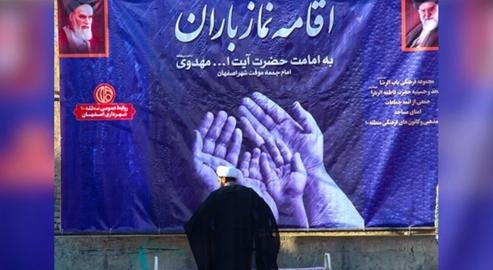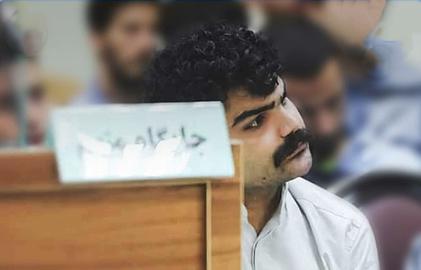Protests over the water crisis in Isfahan intensified on Friday, with security forces firing tear gas and what appeared to be birdshot at crowds gathered on the dried-up Zayanderud riverbed. Farmers’ tents were set on fire the day before and several people have been arrested while unrest also spread to Chaharmahal and Bakhtiari, Khuzestan and Yazd provinces.
The drought in Isfahan has received less media attention than that of other parts of Iran, but a vast amount of scholarly research has been published on the issue in recent years. This report presents a summary of what’s been asserted so far.
***
Like many other provinces in Iran, Isfahan is now being racked by severe drought for much of the year. Though Iranian clerics hold otherwise, “pray for rain” is not an option; the province’s agricultural lands are parched after years of water diversion to industrial zones outside its borders.
Large-scale protests have taken place in both Isfahan and Shahr-e Kord, Charmahal and Bakhtiari province, in the last week. Unusually, footage from the demonstrations was picked up by Islamic Republic of Iran Broadcasting. Together with the provinces of Yazd and Khuzestan, where weeks-long protests erupted and were brutally suppressed this summer, these adjacent regions have had long-standing disputes over water that have only become more serious over time.
Water scarcity and desertification have reduced the area of arable land, crop yield and biodiversity in almost all parts of Iran, leading to increased wildfires and livestock losses. This, in turn, has seen farmers' incomes decline at a time when inflation and unemployment were already on the rise.
A study published last year by researchers at the Ferdowsi University of Mashhad examined the impact of water shortages in Isfahan’s Mobarakeh County. A sample of 178 people were quizzed on what they knew about managing drought, as well as on their economic and social conditions. The researchers found the drying-up of the Zayanderud had caused increased production costs and reduced yields across the board, but also heightened psychological stress. Many respondents said they planned to change job or already had.
Another study by Shiraz University Department of Agriculture scholars this summer tested the resilience of Iran’s 31 provinces to environmental contingencies, changes and disasters. The current socio-economic conditions meant Isfahan was given a “moderate” resilience rating, but researchers said this would be relegated to “weak” if current trends continued.
In late 2020, a group of experts located in Isfahan, Charmahal and Bakhtiari, Yazd and Khuzestan published a joint paper that affirmed the same. Though water governance in Isfahan was slightly better on the whole, they said, none of the provinces were well-equipped to deal with sudden, critical shortages. Still another study published near-concurrently by Tehran’s Kharazmi University ranked Yazd province the lowest of the four in terms of its overall resilience to natural disasters. An article in a police-backed journal in 2019 also raised the alarm about low water availability in the towns and villages of Yazd.
D
There is a historic dispute between Isfahan and Charmahal and Bakhtiari provinces over water resources, as both have similar needs but also now face a similar level of crisis. Those in Isfahan are also against their water being diverted to Yazd.
Many villages in both provinces are now supplied with water by tankers due to the drying-up of the plains. For this reason, the Iranian authorities launched another project to transfer water from the Zagros mountains to water-scarce cities like Isfahan, Yazd, Kerman and Qom, causing such controversy it became an effective security issue.
A 2019 article published in a police bulletin claimed that those opposed to water transfer projects in the central plateau were more likely to take part in rallies and sit-ins than in other parts of Iran. It said “local clashes” were the direct result of these manipulations of the provincial water supply: a state of affairs that continues today.
Related coverage:
Videos: Tear Gas and Shots Fired on Isfahan Protesters
Images of Iran: Mass Protests in Isfahan
Mass Protest in Isfahan as River Drought and Farming Crisis Continue
Iran’s Water Crisis: Will Isfahan be Uninhabitable in 10 Years?
'Water Jihad Council' Launched as 25,000 Villages Go Without Drinking Water
Kermanshah: Spotlight on Another Looming Water Tragedy in Iran
Iran Protests: Tehran Demonstrators Jailed as Arrests Continue in Khuzestan
visit the accountability section
In this section of Iran Wire, you can contact the officials and launch your campaign for various problems

























comments